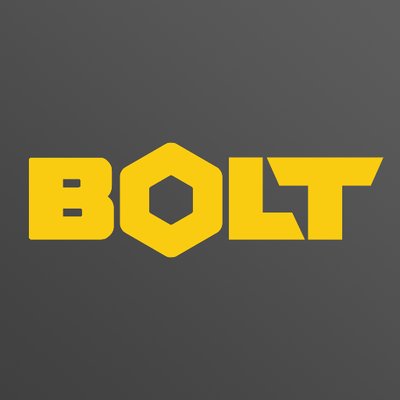I continually notice hardware startup founders over-promising and under-delivering on their products. More often than not, this is a death sentence. When cash is tight in the early days of a company’s life, startups rarely have enough runway to fix the long-tail mistake of shipping a botched hardware product that under-delivers. The dirty secret of exceeding user expectations is lowering them in the first place.
Setting the right expectations is an exceptionally hard needle to thread. Even big companies with piles of cash and droves of exceptionally smart, experienced people get this wrong. Here are my favorite examples of how to (and how not to) set expectations for your hardware product:
Glass vs Spectacles

People of the future will undoubtedly wear technology in a variety of ways. Google’s “do everything” approach has clearly failed whereas Snap’s “do one thing well” approach is pointing towards success. In many ways, these two products are similar: they’re both face-worn glasses and both have cameras, batteries, bluetooth, buttons, etc. Despite these similarities, users think of these products very differently. Google’s glasses are designed to be a platform from the beginning. They coax users to expect a myriad of functions including live walking maps, a better way to take pictures, breakthrough augmented reality applications, seamless bluetooth wireless headphones, and high-end speech recognition. Driven by the multitude of features, users have lofty expectations for a large variety of disparate use cases, making it nearly impossible to delight them all.
On the other hand, Snap’s glasses have a very specific, single purpose: take first-person pictures for messaging on a single network. When users get a pair they expect one function to work well, and it does. Reviews are off-the-charts positive and people are waiting in crazy lines to snap (ha) up a pair as they are released. It’s still early for Spectacles, but as their success continues to grow, I suspect Snap will expand their feature set and maybe even roll out other camera products.
Here are two things Snap has done exceptionally well that hardware startups can learn from:
- Narrow Customer Base
Launching general products like consumer electronics is exceptionally difficult because the population of people that use these products is so varied. Look for a sub-group of users in your target market and focus on them. Google Glass tried to be all things to all people; Snap focuses on a narrow band of Generation Zs that are eager to have a hip, fashionable piece of tech with a single purpose. - Communicate Benefits Not Features
Most users care about what a product does, not how a product does it. Snap sells a camera, but nowhere on their main site do they describe resolution, battery life, or bluetooth settings. This makes it easy to change specifications or features if problems arise during manufacturing or testing. Look how elegant their “product detail” page is:

Siri vs Echo

Another great example of products with a broader scope losing to products with a narrower scope is Apple’s Siri vs Amazon’s Echo. Siri was launched with the ability to “send messages, schedule meetings, place phone calls, and more.” (Apple’s marketing) It was billed as a “do anything” modern “personal assistant.” Few products are launched with higher user expectations. Because the product promises to do so many things, and speech recognition is one of the hardest technical problems around, Siri often disappoints and is viewed by many as a flop.
On the other hand, Amazon’s Echo was launched with only a few features: setting timers, reading news/weather, and playing music from Amazon’s (limited) music library. The initial beta product only responded to a handful of specific commands, but it did so extremely well. By marketing what the Echo could/could not do as “skills” they are explicitly setting consumer expectations and allowing themselves to exceed them. Over time, Amazon has added thousands of integrations; the Alexa platform can now understand millions of phrases and successfully execute a nearly unlimited number of actions. Amazon’s Alexa team is now 1,500+ people and is looking like the fourth pillar product of the $300B+ company.
Here are two things Amazon has done exceptionally well that hardware startups can learn from:
- Narrow Product Scope
Even with a narrow user base,it’s tempting to throw a ton of features into a first product in an attempt to make users happy. Don’t. Focus on finding the single reason a customer would use this product and extend a limited feature set out of this single reason. The likelihood that this “single feature” will cause immense love of the product with a small number of users is much higher than throwing in the kitchen sink trying to make everyone happy. Finding and honing this feature takes a LOT of prototype and testing, so be patient. - Iterate Early With Smaller Number of Units
The best hardware startups iterate early and often by making multiple runs of small numbers of units as they hone in on the right product. This contradicts the popular sentiment that “you must build 10K units to show traction” Amazon launched Echo with an extremely small “beta” program that was pretty private, unlike Apple where Siri was on tens of millions of iPhones overnight. Companies that keep their heads down and aggressively iterate early on will drastically outperform “big launch” companies in the long run, even if the short term metrics don’t tell that story.
Just the Beginning
These are just a few examples to illustrate how hardware startups can increase their chances of a successful launch by lowering user expectations. If there are others that you’ve found helpful, leave them below in the comments.
Ben Einstein was one of the founders of Bolt. You can find him on LinkedIn.
Bolt invests at the intersection of the digital and physical world.
